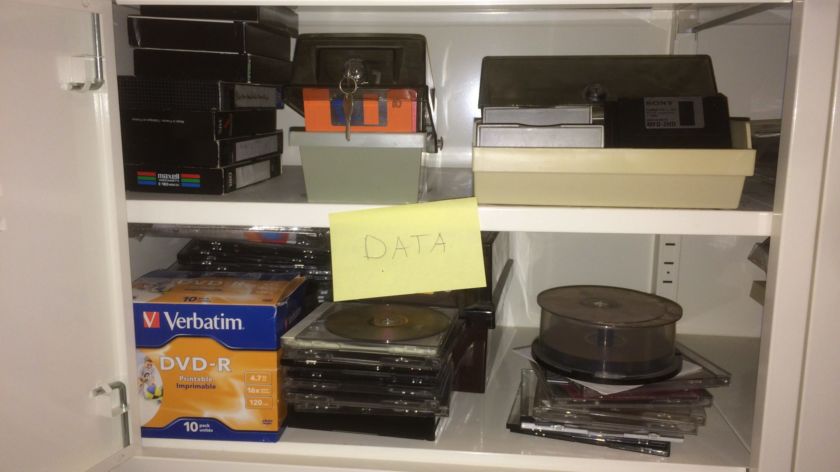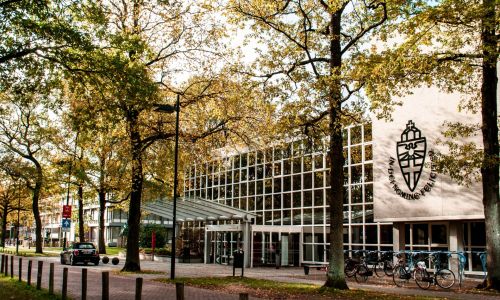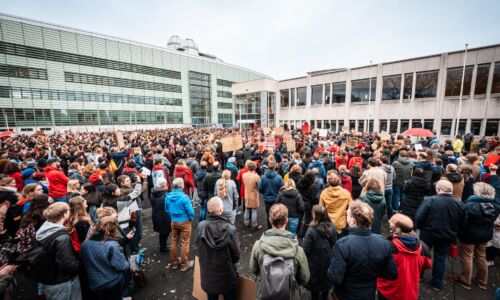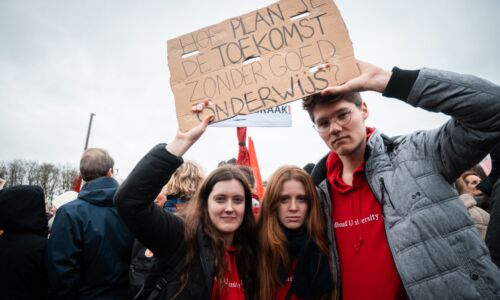Research data: lost no more
Researchers produce vast amounts of data—and more and more each year. Brain scans for a single research project on neuro-imaging with, say, 30 participants, take up a couple of gigabytes for each subject. That said, not all research data on campus are always filed away nicely, let alone made available to other researchers.
There’s some real room for improvement there, according to the Association of Universities in the Netherlands (known by its Dutch initials, VSNU). And Radboud’s Executive Board is now translating words into deeds: in his New Year’s address, Board Chair Daniël Wigboldus announced that all researchers on campus must now save their research data in a systematic and sustainable way and, if possible, make them available to the outside world. In a word, this is what Research Data Management (RDM) is all about (see the box below). And the process must be completed by the end of 2020.
Another laptop mislaid
Wigboldus sees RDM as a top priority. ‘It goes hand in hand with sound scientific practice. You should be able to say how the data support your scientific insights. By storing the underlying data in accordance with the FAIR criteria (see the box) and making them available where possible, you are fostering transparency. That is also required by more and more scientific magazines and funding agencies—and quite rightly so.
‘It will require a change in research culture’
As the Chair sees it, this will promote not only the quality but also the sustainability of research: ‘Scientists will be able to make use of each other’s data much more easily, for instance to produce meta-analyses or re-analyses. Hopefully, fewer data will be lost if a researcher moves to another university or loses a laptop, for instance.’
A change in culture
Wigboldus anticipates that researchers will also be enthusiastic. ‘I don’t think researchers will need any convincing about the usefulness of this change. Let’s be clear: what scientist doesn’t want science and society to benefit as much as possible from their research?’ Still, he acknowledges that, in certain quarters, sharing data isn’t the most normal thing in the world. ‘In fields such as astronomy and sociology, it’s already standard. But in other fields, there’s still a good bit of room for improvement, I think, and that will likely to require a change in the culture.’ But there’s just no getting away from it: ‘Our top priority must be what’s in the interest of science.’
‘Researchers will have to start estimating data-related costs in grant applications’
Research institutes decide for themselves how they want to organise the storage and sharing of data. And hopefully they will manage. ‘We can do that within the university, but also outside—for instance, through DANS (see the box). We’ll leave that to the researchers, who are the ones who are most familiar with their data. We’re not going to try micromanaging this.’ There is in fact a single campus-wide system for documenting research data: the Research Information Services system, or RIS, as it’s called.
Pilot
All researchers will notice the impact of RDM— not only in their daily work, but also when it comes to the university’s purse strings. ‘There’s no free lunch—and RDM is no exception. Researchers will have to see to it that they estimate data-related costs in their project budgeting and their grant proposals. Primary research will thus be more expensive than it has been.’ How much more, the Chair cannot really say—estimates range from 5 to 10 percent. ‘But the costs will eventually be recouped, because the sound management of scientific data delivers more over the long term.’

The Executive Board is making resources centrally available for the start-up phase. For example, it financed a pilot project to set up an RDM system at the Donders Institute. And it was a success, says project manager Eric Maris of the Institute: RDM is now an integral part of day-to-day work at the Institute. Now, that didn’t happen just like that: ‘Scientists and IT professionals had to sit down together to get the job done. And that was a learning process for both sides.’
Now the system finally working to everyone’s satisfaction. ‘At the Institute, we work on a project basis. When a project is approved, databases are automatically created in RDM. Once a researcher scans a test subject in an MRI scanner, the data are written to data files, and, at the end of a project, they can be shared with the outside world at the touch of a button.’
Underestimation
Maris wonders, though, whether the Board and the research institutes aren’t underestimating RDM a bit. ‘RDM is more than just building the right IT infrastructure’, he cautions. ‘Researchers have to adjust to new ways of working. This form of open science calls for documenting, collaborating, and sharing research data. I’ll be curious to see how these changes will be made in various quarters.’
Wigboldus also says he thinks adopting RDM is a learning process for the University. ‘We don’t have to get it spot on right off the bat. In fact, we can’t, because research practice and technical opportunities are both developing at such a pace.’
[kader-xl]
What does Research Data Management entail?
- All data from Radboud publications will have to be stored in accordance with the FAIR criteria—and meet all legal and ethical requirements—no later than the end of 2020.
- FAIR means:
- Findable: it should be clear where data are located
- Accessible for at least 10 years
- Interoperable: readable with free software
- Reusable: usable for re-analysis or new research
- This also applies to data from bachelor’s and master’s theses.
- All research institutes on campus had to have a plan ready before 2018 in which they describe how they will address RDM.
- There are several systems available for data management. Radboudumc works, for instance, in a Digital Research Environment, while the Donders Institute has the Donders Repository.
- Research data don’t actually have to be stored on campus, as long as they can be easily found and, if possible, shared. That can also be done, for instance, through Data Archiving and Networked Services, or DANS—an institute that belongs to the Royal Netherlands Academy of Arts and Sciences (KNAW) and the Netherlands Organisation for Scientific Research (NWO), and that facilitates permanent access to digital research data.
- The processing of metadata does take place centrally: every researcher must document each publication, and the data underlying it, through Research Information Services (RIS).
- Each research institute appoints a data steward, who serves as a point of contact for researchers; the University Library serves as a central help desk.
- Institutes bear the financial costs themselves, while the Executive Board is funding the start-up phase.
Ultimately, it is researchers themselves who are responsible for handling data in the right way.
[/kader-xl]




